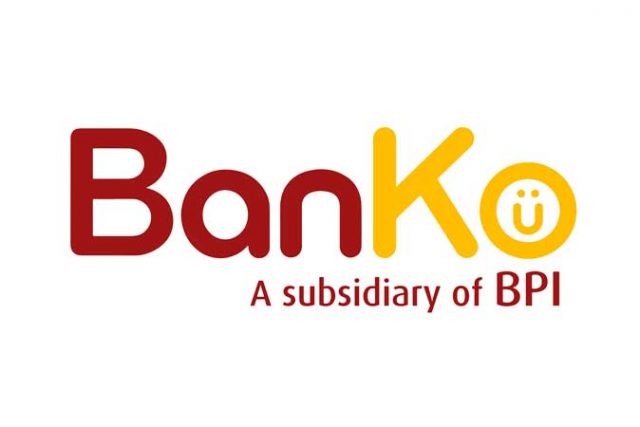Video Game Review
Eximius: Seize the Frontline
Personal Computer via Steam
Outbreak: Endless Nightmares
Sony PlayStation 5/Nintendo Switch
Ghosts ‘n Goblins Resurrection
Sony PlayStation 4
Eximius: Seize the Frontline has humble origins, but also carries big dreams on its shoulders. Coming from bright minds at Malaysia-based Ammobox Studios, the game is one of stark ambition, seeking to combine the novel concepts of real-time-strategy (RTS) gameplay with first-person-shooter (FPS) mechanics in a manner that few others have tried before. True, titles like Natural Selection 2 do come to mind. Eximius: Seize the Frontline, however, goes far beyond the leanings of its predecessors. While it may bear the trappings of a modern military shooter, it makes for a brand-spanking-new, exciting way to experience both genres at the same time.
In Eximius: Seize the Frontline, there are two main classes to select in-game. You can work either as an officer on the ground or as the top commander aiming to lead the army to victory. The choices require inherently different approaches and interactions with the game, and dictate how you’ll be experiencing its mechanics firsthand. As an officer, it’s your job to do the gruntwork. With a gun in your hand, you’ll be ducking behind cover, moving from objective to objective, and shooting down whatever foes you come across, be they man, drone, or vehicle. It’s standard FPS fare, and while the gunplay is fairly mediocre, the good variety of weapons you have on hand combined with the punchy nature of their sounds makes for a decent fun time. The feel isn’t like that of any release in the Call of Duty or Battlefield series, but it does play great, especially when combined with the overall RTS mechanics.
In Eximius: Seize the Frontline, the officers lead the charge and the commander supports it. Officers are the ones who spearhead attacks into enemy territory, but the commander is the one who purchases upgrades, drops health packs for his soldiers, buys vehicles, and even assigns squads of friendly non-playable characters to support the attacks. This interaction with both classes brings up a highly tactical experience to the forefront, one that relies on communication as well as on skill to really shine. You’ll have assaults on defended positions while salvos of missiles drop to augment your charges. You’ll encounter heavy resistance from jet troopers and assault vehicles, and have to fend off upgraded players and grunts on your way to secure victory. It’s a fun, dynamic experience waiting to be discovered, and, when it all works, it works wonderfully.
Therein lies the problem in Eximius: Seize the Frontline, though. For all the potential that it carries, it’s held back by one main flaw: It has a low player count. A multiplayer-based game with only a small multiplayer community to back it up will have intrinsic issues, and while some games can manage, this one cannot. With its current population not even reaching triple digits, unfair match-making is to be expected. There simply aren’t enough people to play with, especially for newcomers, leading to a very difficult new player experience. This doesn’t mean that it’s a bad game. In fact, it has all the makings of a compelling one. Unfortunately, in its current state, it is hard-pressed to cope with issues like skill gaps between new players and veterans. And it doesn’t help that the tutorials are vague and high latency pops up — temporary hurdles, to be sure, but nonetheless difficult to get past.
Bottom line, Eximius: Seize the Frontline is nothing short of outstanding under the right set of conditions. Else, it has a handful of barriers to entry for those looking for a casual game to enjoy.
THE GOOD:
• Superb combination of RTS gameplay and FPS mechanics
• Surprisingly enjoyable combat, against both NPCs and other players
THE BAD:
• Very low player count, resulting in less than enjoyable gameplay experiences when matched with veterans
• High variances in latency
RATING: 7.5/10
POSTSCRIPT: “The soul is willing, but the body is weak” is how Outbreak: Endless Nightmares can best be described. As the brainchild of Drop Dead Studios, Outbreak is a game of lofty intentions, with aspirations of combining an old-school approach to survivor horror with the random nature of a roguelike game. Featuring a straightforward but understandable progression system, a decent selection of maps to explore, and all the quirks of classic survival horror gameplay, it really aims to highlight the nostalgia for those who wish for a return to the classic Resident Evil style of gameplay.
Creditably, Outbreak: Endless Nightmares does well to meet the aforementioned objective. The levels you can travel around in are, by nature, repetitive, albeit with unique themes. From an abandoned mansion to a ruined factory, you’re pretty much exploring the best a standard horror setting can offer. Each level archetype has its own loot table with its own levelled gear and rarity, with different types of traps to conquer, enemies to face, and puzzles to solve. These are all randomized as well, forcing you to ration the few supplies you can find along the way. While you can hoard items you wish to use while navigating the levels, you can hold only eight unique items in your limited inventory, forcing you to either drop the ones you don’t need or place them inside randomly generated item boxes. Progression through a given level is as simple as finding the exit door, with some levels being as short as five seconds should you be fortunate enough to spawn next to the exit door itself. Complete enough levels, and you earn the reward of either going home with whatever loot you scavenged or moving on to a more difficult set of levels with better rewards to claim.
Outbreak: Endless Nightmares is really just standard roguelike gameplay, wearing the mask of a survival horror game to keep you going. That said, it’s actually fairly entertaining, if somewhat cheesy. Levels are usually simple to clear, and the surface-level survival horror rationing gives the game a little depth when it comes to inventory management. Any permanent progress you can gain comes off in the form of better items to use, and of more varied levels to explore. And while it’s not deep, it keeps you interested, at the very least by the concepts it mashes together. After all, few games can lay claim to the title of rogue-like survival horror.
Admittedly, Outbreak: Endless Nightmares is far from perfect. For starters, it looks mediocre at best. Animation feels stiff and unwieldy, to the point that it alters depth perception; it makes you avoid melee weapons as it’s not able to properly convey their reach. Guns feel great to fire, but the comical blood-spatter effect combined with the damage output of your weapon being tied to its rarity and level can lead to some pretty absurd moments.
And then there are Outbreak: Endless Nightmares’ puzzles. Most of these come in the form of switches to activate or statues to push into place – not too hard to solve in and of themselves. It’s just too bad that environmental hazards don’t have a good tell if you’re going to be hitting them or not, causing you unnecessary frustration when you get hit by a laser that you’re absolutely sure shouldn’t be hitting you. Meanwhile, an occasional puzzle can be absurd in its simplicity, calling into question why Drop Dead Studios even bothered putting it there if all you needed to do was press a button to “solve” it. At the other end of the spectrum is the odd puzzle that just doesn’t work. It won’t be bad per se, but the setup makes it almost impossible to complete properly. It won’t feel difficult or challenging — just broken, broken and unfinished, and ultimately frustrating.
Outbreak: Endless Nightmares needs to be appreciated for its efforts to be unique and present hitherto-unseen concepts. It has a lot of content to play through, a lot of unlockables to peruse, and even some cooperative content for when you want to play with someone else. On the flipside, it can appear clunky and unfinished, and can test your patience. To be fair, Drop Dead Studios continues to listen to feedback and is bent on making requisite changes, perhaps even to the core design. Left unsaid through the course correction is the fact that it should have been far more polished upon release.
All told, Outbreak: Endless Nightmare is an ambitious indie title, the little game that dares try. When – if – it will succeed is the question.
THE GOOD:
* Decent amount of content to run through
* Fairly straightforward game design
* Coop-enabled to enjoy with others
THE BAD:
* Some puzzles and environmental hazards seem broken
* Content-heavy, but very light on depth, with shallow, surface-level mechanics
* Evidently limited options for randomization, likely leading you to seeing the same room layouts shortly after you start
RATING: 6/10
Ghosts ‘n Goblins has had a reputation for being a hard game, and is infamous for its high difficulty curve and punishing design. Considering what it stands for, no eyebrows were raised when Capcom opted to stick to its extremely punishing gameplay when it comes to its successor. In fact, the Japan-based developer stuck to a familiar story in presenting Ghosts ‘n Goblins Resurrection as knight Arthur’s quest to rescue his damsel in distress from the clutches of an evil demon. A missed opportunity to expand upon the source material’s premise? Perhaps. All things considered, however, it’s not really that much of a loss when the gameplay does the intellectual property proud and sticks the landing.
With seven brutal levels to play through and eight different weapons to wield, Ghosts ‘n Goblins Resurrection is the classic Ghosts ‘n Goblins experience cranked up to 11. Enemies continually spawn to harass you, invariably with a desperate vigor to take you down. You’ll trek through all the classic stages, from haunted graveyards to ruined castles, and fight a plethora of difficult foes and mini-bosses that stand in your way. It’s a tough experience, especially given the fact that Arthur’s constitution is far more fragile than his knightly stature would imply. It’s not an easy game by any means, and, given how aggressive the enemies are, it occasionally borders on being unfair. But that’s what makes it so engrossing. The seemingly insurmountable struggles make victories taste all the sweeter. And while you’ll die again, and again, and again, Ghosts ‘n Goblins Resurrection is all about learning patterns and being patient. Make that extremely patient. When you understand the proper balance between rushing forward and stopping, that’s when the game is at its finest.
Fear not, though, for while Ghosts ‘n Goblins Resurrection can be frustrating, it’s got some extra features that can give you a helping hand if you’re having trouble. For starters, there are four difficulty levels to choose from, giving you plenty of flexibility in how you want your experience to be – with the lower difficulty levels giving you extra hit points to help you get through the stage. The ability of a cooperative feature means you can team up with another player if you don’t feel confident you can finish a level on your own. Meanwhile, the game’s checkpoints are spaced just enough to not feel too frustrating. (If you ever feel the need to challenge yourself, the “Legend” difficulty will more than test your skills.)
All told, Ghosts ‘n Goblins Resurrection stands as the franchise’s best release, especially when combined with its stylized visual design. It’s brilliant side-scroller, one that will definitely test your mental fortitude AND your skill. In the aftermath of one of your myriad deaths in the game, you will find yourself asking if you’re ready for another challenge. No matter your decision, you’ll never forget your experience – no small feat for a game that uses the same formula of the 36-year-old original. Clearly, the best classics last. The spit and polish simply make it look prettier.
THE GOOD:
• The classic Ghosts ‘n Goblins experience at its finest
• Allows for more flexibility in how it can be enjoyed, with various difficulty modes and a coop feature to spice things up
• Striking new, stylized art that also helps in letting monsters stand out
THE BAD:
• Not much added content
• Can still be as frustrating as ever
• Depending on how skilled you are and what difficulty you choose, can have a short runtime
RATING: 9/10
THE LAST WORD: VNG Corp. is slated to release Cloud Song: Saga of Skywalker, which has players exploring a fantasy world while flying solo or with the help of friends. Boasting of a classic European animation style, it offers customizable characters of the Mage, Archer, Swordsman, Oracle, and Rogue classes for party members to choose, mix, and match.
Cloud Song: Saga of Skywalker includes a series of player-vs-player (PvP) and player-versus-environment (PvE) challenges for players to reap rewards. PvP interactions feature offline fights, guild wars, duels, and cross-server wars, where players can earn medals, resources, champion titles, exclusive frames, and access to different battlefields. Meahwile, PvE conflicts come by way of daily hurdles for players, with the boss-level battles leading to character upgrades.
Available throughout Southeast Asia, Cloud Song: Saga of Skywalker will be in the pre-registration phase until Aug. 18.
















